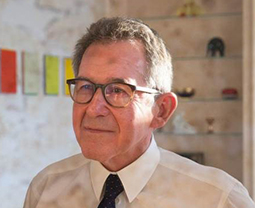what were the key features of the management system created by john browne at bp?
Lord Browne, Engineer, Author, Businessman
 | One of the country's leading industrialists, Lord John Browne spent 41 years at BP and is currently the UK Chairman of Huawei. A former president of the Royal Academy of Engineering and, since 2001, a crossbench member of the House of Lords. His book Make, Think Imagine: Engineering the Future of Civilisation was longlisted for the Financial Times and McKinsey Business Book of the Year Award 2019. |
Return to podcast page
Making physical things in a digital world
In 2011, the web pioneer Marc Andreessen announced that "software is eating the world". His argument was that every part of our lives and every corner of our economies is being reduced to bits and bytes, which are then manipulated by computer algorithms. The implication was that the physical world, populated by the tangible objects that we make, build and exchange, will gradually recede in importance.
While it is true that inventions such as the smartphone collapse multiple functions into a single form (nobody need carry a separate camera, diary, typewriter, pocket radio and book with them these days), these positive trends towards 'dematerialisation' and 'digitisation' can only go so far.
We cannot eat software and nor will it heal us, clothe us or provide us with shelter. We will still need such basic things as steel pipes and optical fibres, as well as the more complex technological devices that support all our digital tools. And the 'cloud' is not the ethereal computing network that its name might suggest; it is entirely dependent on the hardware housed in the world's data centres. As it grows in capacity, so does its physical footprint and energy demand. When I spoke to John Hennessy, a Turing Prize-winning computer scientist and former president of Stanford, he put it like this, "If we're really going to invent a better world … there's got to be more than just digitisation."
This view was echoed by Tony Fadell, one of the principal inventors of the iPod and the iPhone, who is adamant that innovation in hardware still represents the way forward. "Software can only eat the world after a hardware disruption has been created. If the hardware wasn't there, none of the software would have been created." And in his view, getting the devices right so they can unshackle new potential is critically important, and often much more challenging than software engineering. "It takes a radical way of thinking about the entire system to create the explosion of new opportunities, new businesses, new industries and new verticals that can be created [after a transformative new device or platform is invented]."
The successful launch of constellations of GPS satellites, is a clear illustration of this point. Modern life is dependent on these systems; navigation, agriculture, stock market trading, mobile networks and power grids are all heavily dependent on the accurate time and location data that they provide. But only after the physical satellites were in orbit and fully operational could all these crucial applications be born. Paul Verhoef, director of the European Space Agency's Galileo GPS programme, confirmed Fadell's central message when he said that, as hardware innovators, "we need to look ahead, often a lot further ahead than where the IT folks are looking".
So much hype surrounds the latest software, cloud platforms and artificial intelligence algorithms that it is too easy to forget that many of the biggest challenges facing humankind can only be tackled by making physical objects and systems. The crucial goal of reducing carbon dioxide emissions in order to tackle climate change demands that we innovate and deploy at a huge scale new energy sources and distribution networks. Relieving energy poverty and securing supplies of water, food, sanitation and other basic necessities in the developing world requires physical engineering. As health care improves and populations get older, we will need better and more affordable medical devices that we can deploy ubiquitously. And, as cities grow, we must make physical infrastructure and transport systems that maintain cities as functional and pleasant places to live. Digital tools certainly help us make solutions in more inventive and efficient ways, but they cannot confront these problems alone.
The human urge to make is at the heart of all progress; it is implicit in every new work of art, every attempt at DIY and every patch that is coded for a piece of open-source software. It is a universal activity and the products of engineering allow us all to tinker, refine and choose how we want to make our lives better and more enjoyable.
what were the key features of the management system created by john browne at bp?
Source: https://www.rathbones.com/lord-browne-engineer-author-businessman
Posted by: bunchhollices.blogspot.com

0 Response to "what were the key features of the management system created by john browne at bp?"
Post a Comment